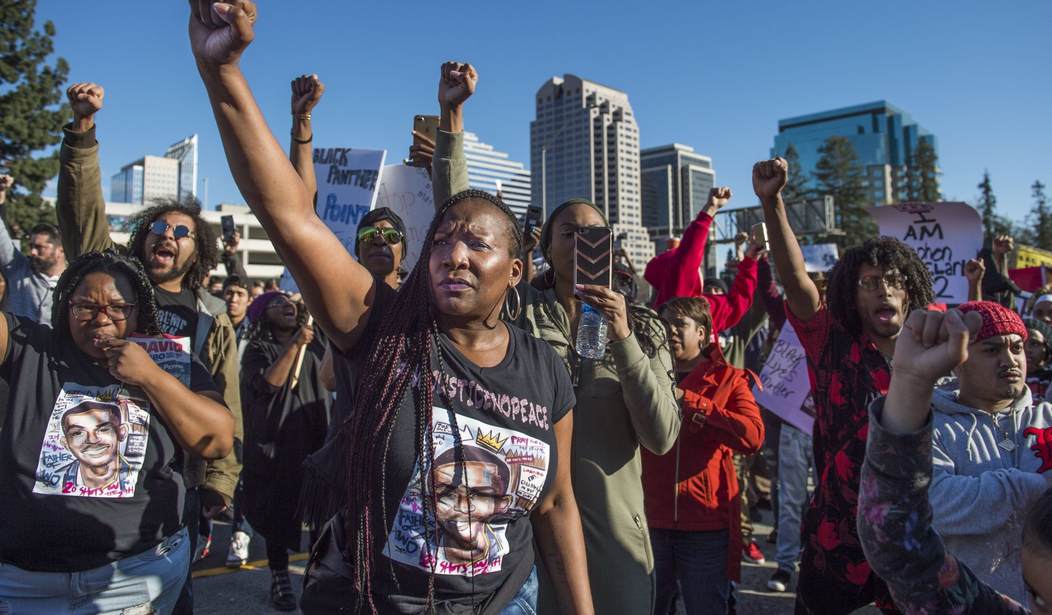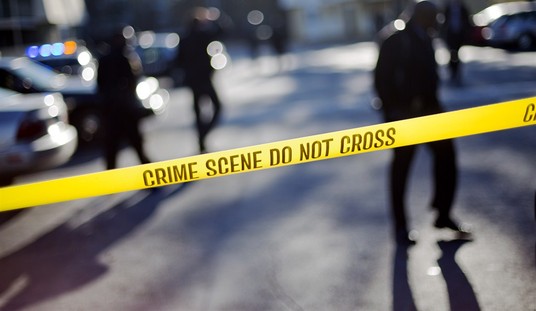At the risk of boring you, gentle reader, I find it necessary to revisit, for the third time in a week, the 1989 U.S. Supreme Court decision in Graham v. Connor, which defined how all courts (and everyone else) should evaluate a police officer’s use of force.
“The ‘reasonableness’ of a particular use of force,” wrote Chief Justice Rehnquist for a unanimous Court, “must be judged from the perspective of a reasonable officer on the scene, rather than with the 20/20 vision of hindsight. … The calculus of reasonableness must embody allowance for the fact that police officers are often forced to make split-second judgments — in circumstances that are tense, uncertain, and rapidly evolving — about the amount of force that is necessary in a particular situation.” It’s important to note that Graham arose from an incident in which police used force on a man who had not committed a crime, but whose behavior gave officers a reasonable suspicion that he had.
Which brings us to Sacramento, Calif., and the case of 22-year-old Stephon Clark, who was shot to death by two police officers in circumstances that were in every way tense, uncertain, and rapidly evolving. On the night of March 18, two officers from the Sacramento Police Department responded to a radio call regarding a man who was seen breaking car windows in the city’s Meadowview neighborhood. The officers, each driving a marked police car and both in uniform, were on foot and checking the area when deputies overhead in a Sacramento County Sheriff’s Department helicopter directed them to a possible suspect, later identified as Clark.
Clark was seen running through a backyard and jumping over a fence, then looking into a car parked in the driveway of what was later revealed to be his grandmother’s house, where Clark himself lived. The events that followed were captured on the two officers’ body-worn cameras and by the infrared camera in the helicopter. The Washington Post edited the videos and the accompanying audio, putting them together in a concise presentation that can be seen here.
As shown in the videos, an officer approaches Clark and at gunpoint orders him to “show me your hands.” Clark flees, running toward the backyard. The officer follows, soon joined by the second officer. Clark is ordered to stop, but instead he runs around the corner of the house and out of the officers’ view. The officers round the corner, then quickly retreat as one of them shouts, “Show me your hands! Gun!”
Both officers peek around the corner, at which time one of them shouts, “Show me your hands!” followed immediately by “Gun, gun, gun!” Both officers open fire, killing Clark.
It was later found that Clark, who was black, was carrying a cellphone, not a gun. His death has sparked protests in Sacramento, where demonstrators have shut down a freeway, blocked streets, and prevented ticketholders from entering the Golden 1 Center, where the Sacramento Kings and the Atlanta Hawks played before half-empty stands.
The demonstrators have demanded that the officers who shot Clark be arrested and charged with murder. The decision whether to charge the officers will not come soon, and when it does, the demonstrators will be disappointed.
Clark’s death falls into the category of shootings known unofficially among prosecutors as “awful but lawful.” It is true that he did not have a gun, but it is also true that the officers believed he did at the time they fired. The question to be answered in evaluating the officers’ actions is this: Was the belief that Clark presented a deadly threat “reasonable” within the guidelines set forth in Graham v. Connor? Unless evidence to the contrary emerges through the investigation, clearly the answer is yes.
Consider: This was not a case of the police accosting someone without reasonable suspicion. Clark was the man seen by a neighbor breaking into cars, and the police had every right to detain him and investigate. When they attempted to do so, he ran, leading the officers on a chase down a driveway and into a residential backyard. Those who say the police did not identify themselves during the chase are raising a false issue. The officers were in uniform and had arrived in marked cars, and there was a sheriff’s helicopter circling overhead. Clark knew very well he was running from the police.
When cornered in the backyard, Clark advanced several steps toward the officers, as is clear in the video shot from the helicopter. What is less clear is the position of Clark’s hands at the time the officers fired, but it is apparent they are not raised as if in surrender.
There is nothing in the officers’ conduct that suggests they were out of control before the shooting or acted inappropriately after. Indeed, immediately after shooting Clark, they seemed as calm as anyone can be expected to be in their position. They took turns reloading their weapons in anticipation of further engagement with the suspect. They communicated effectively, informing responding officers of their location and a safe route to approach. And they waited until additional officers had arrived before approaching a suspect they believed to be armed and whose condition they could not safely assess. Though one officer expressed the belief he had fired only five rounds (they each fired ten), this is a common misperception among officers involved in shootings, and it goes to prove his fear of being shot was genuine.
All of this will be ignored by people more invested in racial grievance than in truth and the law, a description that may bring to mind Al Sharpton, who released a statement saying, “It is an atrocity that an unarmed young man was shot at 20 times in his own backyard and shows the urgent need in these times for intervention against police misconduct.”
Mr. Sharpton is only the loudest voice among those who believe the greatest threat faced by blacks in America’s cities is that posed by racist police officers looking for the merest excuse to gun them down. In propagating this belief, they point to the hundreds of blacks shot by police across the country every year while ignoring the thousands shot by other blacks.
Sacramento Mayor Darrell Steinberg took the politician’s typical witless position when he pronounced the shooting was “wrong” while acknowledging it was still under investigation. “Our kids and men don’t feel safe,” said Steinberg. He went on to add: “There is no danger if we do the right thing, if we push aggressively to change what must be changed.”
The below map, created at the LexisNexis Community Crime Map website, depicts only the most serious of crimes reported to Sacramento police over the last year in the area near where Clark was killed. If kids don’t feel safe in Sacramento, a mere glance at the map would suggest it’s not because of the police.

As for the mayor’s statement that “[t]here is no danger if we do the right thing,” he is correct, but not only in the sense that he meant it. Doing the “right thing” surely would include refraining from breaking the windows on your neighbors’ cars, and then not running from the police when they try to arrest you for it. Stephon Clark, like Eric Garner, Michael Brown, and so many other martyrs to the Black Lives Matter Movement before him, had only to surrender peacefully to the police when found to be breaking the law and he would be alive today.
Or, even better, not break the law in the first place. Is that really too much to ask?










Join the conversation as a VIP Member